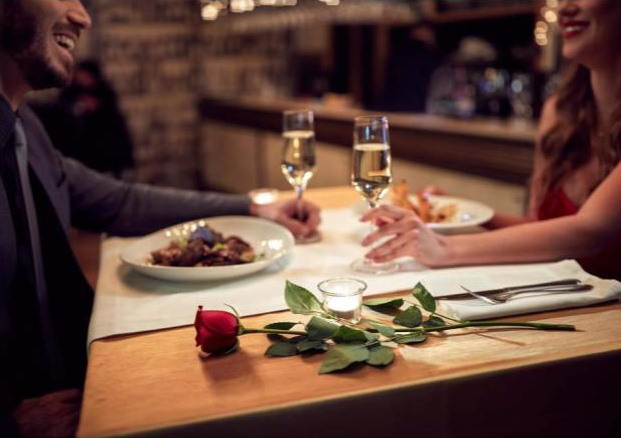6 Psychological Tricks in Restaurant Menu You Should Know For a Romantic Evening
- Written by News Company

The restaurant menu is not just a list of dishes. Professionals keep strict watch that it matches the style of the restaurant, is easy to read, and most importantly, contribute to the increase in income. In order not to become a victim of manipulation during lunch or dinner in a restaurant, you need to understand what tricks the menu composers use. So what do they do?
1. Limit choice
Menu composers always take into account the theory, called the "paradox of choice." Its essence is that the more choices there are, the more we worry when making a decision. The ideal number of options is 7 for each category.
“If we add more items to the menu, the guests will start to get confused, and then, most likely, they will order a standard dish that they have already tried before,” says a menu designer Gregg Rapp. There is nothing wrong with giving preference to familiar
and proven dishes, but a well-designed menu can encourage visitors to try something new, more expensive.
“Complicating the menu, we only torment the guests,” says a restaurant consultant Aaron Allen. “As a result, they leave the restaurant unsatisfied. This is partly due to the fact that they are starting to doubt – maybe I should have ordered something else?” And if they did not like the dish, they are unlikely to come here again. Given the fact that constant visitors generate about 70% of revenue, the main goal of any restaurant is to make a visitor want to come back again.
2. Add photos
If the menu is illustrated with beautiful pictures, visitors order an average of 30% more dishes. The scientists at the University of Iowa conducted an experiment: children who saw a picture of the salad were 70% more likely to order it for lunch. We react to the image of the dish as if it were lying on the plate in front of us. If you are hungry, the reaction will be: "I will order what is in the picture."
However, moderation is also very important. Some visitors associate an excess of pictures on the menu with cheap eateries. Restaurants of the highest class try not to include pictures in the menu at all, so as not to taint the presentable image. Do not know how to choose a top-class restaurant for a date? Women for marriage know all about high-quality and tasty food.
3. Try to make prices not striking
Another way to encourage guests to leave more money in a restaurant is to make prices on the menu as unostentatious as possible. “We got rid of the dollar sign as it causes unpleasant emotions, reminding visitors that they are spending money,” says Aaron Allen. For example, the price of a club sandwich is indicated in the menu not “$12.00” but “12.00” or even just “12.”
One of the mistakes in menu composition is the dotted lines from the dish name to its price. As at first, a visitor looks to the right side of the page, where prices are indicated, and only then he looks to the left, searching for a cheaper dish.
4. Expensive lures
Everything is relative. Another popular psychological trick – adding a very expensive dish to the top of the menu list, compared to which everything else seems quite affordable. Your waiter does not really expect you to order lobster for $300, but compared to it, a steak for $70 seems to be inexpensive, isn't it?
Dishes at a slightly high but affordable price seem to be of better quality. As a result, guests leave the restaurant well-fed and satisfied. In one experiment, two groups of people were offered the same buffet dinner. But in the first case, it cost $4, and in the second – $8. Although the food in both cases was absolutely the same, those who paid more confirm it to be tastier. Remember this information for a successful romantic date with your loved one.
5. Use color design
The use of different colors can cause certain emotions and influence the behavior of visitors. Many restaurants know this fact and actively use it. Blue color has a calming effect. Red stimulates the appetite, and yellow attracts attention.
6. Ornate descriptions of dishes
Long, detailed descriptions of dishes increase the number of orders – according to some data, by 30%. The more detailed description of the dish is on the menu, the cheaper it will look to visitors – they seem to get more for the same money.
Moreover, visitors will feel the taste that you point. Phrases like “grown on a farm” and “made from native products” are very attractive to guests. Thanks to such comments, the dish seems to be of higher quality. This technique is so effective that in many US states the law prohibits restaurants from writing on the menu invalid information about the origin of products.





